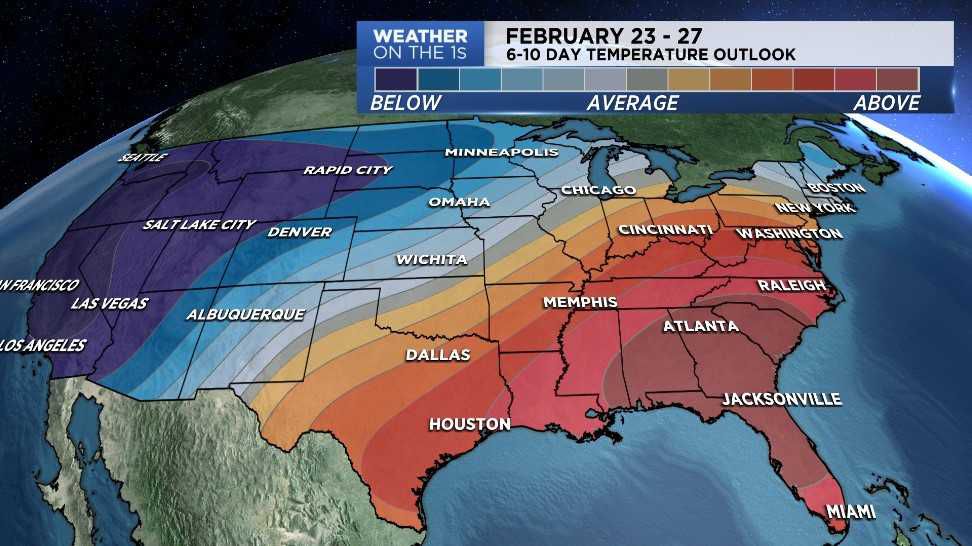As we approach the last week of meteorological winter, there are already signs of spring on the way. Not only in the air, but if you look around, some trees are already blooming and the daffodils are popping up.
Looking back over the 2022-2023 winter season, North Carolina has only had a couple of outbreaks of bitterly cold weather.
The one that immediately comes to mind was in late December, when an unusually strong arctic front arrived the Friday before Christmas Day. Along with wind gusts over 50 mph, much colder air behind the front resulted in a sharp drop in temperatures immediately behind its passage.

Low temperatures the following Saturday morning (Christmas Eve) dipped into the single digits and teens across the Piedmont.
Some noteworthy lows that morning include Greenboro and Charlotte, where temperatures plummeted down to 5 and 9 degrees, respectively. Raleigh even woke up to frigid temperatures only at 10 degrees.
Of course, the coldest readings were in the mountains. Asheville dropped to 0 degrees, but other areas reported subzero temperatures, with lows bottoming out at -8 degrees in Boone -8.
The coldest reading in the state was at the top of Mount Mitchell, where temperatures plummeted down to -21 degrees! According to the North Carolina State Climate Office, that was the seventh coldest temperature recorded on the mountaintop in its 90-year history of record keeping.
Even the coastal areas such as Wilmington and Hatteras didn’t escape the bitter arctic air, with temperatures dropping down to 19 and 22 degrees, respectively.
In general, though, December was a mild month overall. The aforementioned arctic blast was the culprit that skewed the monthly average temperature slightly below average.
Other than a few brief cold snaps, it turned out to be a mild winter. In particular, January went down in the record books to be one of the mildest in recent memory. On average, it ranked around the 10th mildest across the state.
Specifically, some examples include Raleigh/Durham and Greensboro, which ranked January as their seventh and 10th mildest, respectively. For both Charlotte and Wilmington, January 2023 placed as the 11th mildest on record, with Asheville ranking the first month of 2023 as its 14th mildest.

While there is still a little over a week left in February, the final month of meteorological winter has followed suit.
According to the Climate Prediction Center (CPC) 6 to 10 day outlook, this looks to remain the case through the end of the month, as the entire state is expected to see above-average temperatures persist through the final full week of meteorological winter.
With that, it is a certainty that the winter of 2022-2023 is going to end up being another mild winter, let alone a virtually snowless one (minus the mountains). Unfortunately, this isn't the best news for all the snow lovers out there, as the window is closing fast on this season to produce a measurable snowfall.
In the coming days, we will be able to determine the final ranking of this meteorological winter season.
Our team of meteorologists dives deep into the science of weather and breaks down timely weather data and information. To view more weather and climate stories, check out our weather blogs section.





